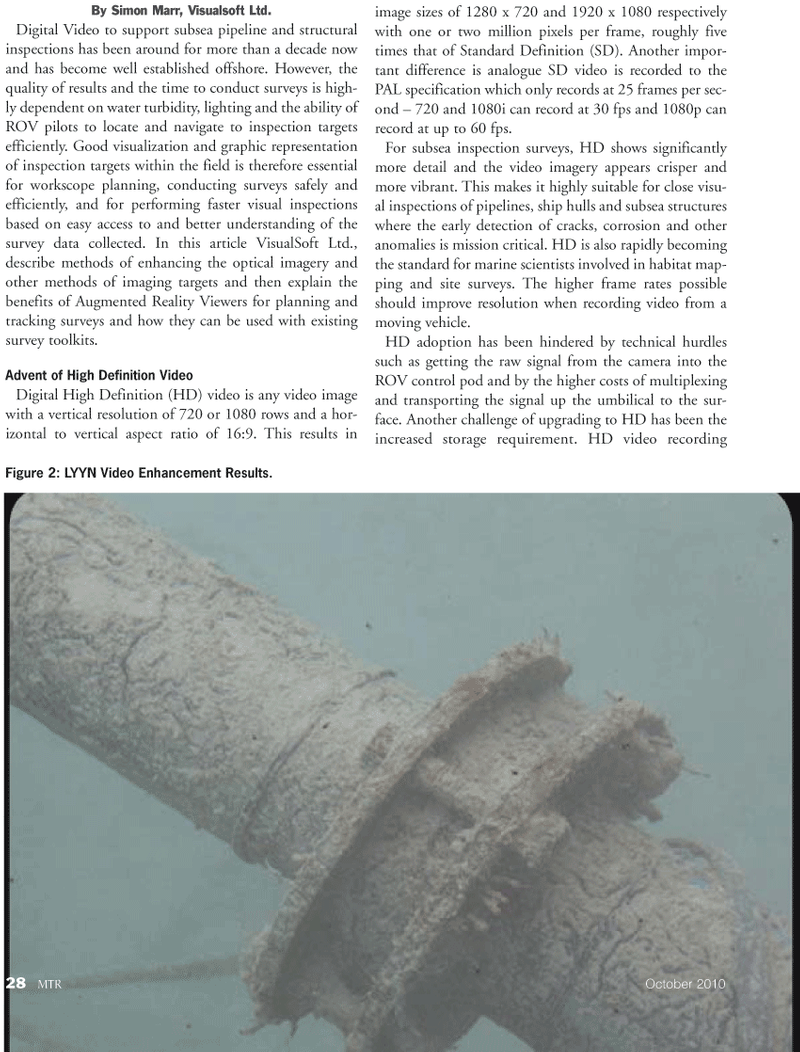
Page 28: of Marine Technology Magazine (October 2010)
Ocean Engineering & Design
Read this page in Pdf, Flash or Html5 edition of October 2010 Marine Technology Magazine
28 MTR October 2010
By Simon Marr, Visualsoft Ltd.
Digital Video to support subsea pipeline and structural inspections has been around for more than a decade now and has become well established offshore. However, the quality of results and the time to conduct surveys is high- ly dependent on water turbidity, lighting and the ability of
ROV pilots to locate and navigate to inspection targets efficiently. Good visualization and graphic representation of inspection targets within the field is therefore essential for workscope planning, conducting surveys safely and efficiently, and for performing faster visual inspections based on easy access to and better understanding of the survey data collected. In this article VisualSoft Ltd., describe methods of enhancing the optical imagery and other methods of imaging targets and then explain the benefits of Augmented Reality Viewers for planning and tracking surveys and how they can be used with existing survey toolkits.
Advent of High Definition Video
Digital High Definition (HD) video is any video image with a vertical resolution of 720 or 1080 rows and a hor- izontal to vertical aspect ratio of 16:9. This results in image sizes of 1280 x 720 and 1920 x 1080 respectively with one or two million pixels per frame, roughly five times that of Standard Definition (SD). Another impor- tant difference is analogue SD video is recorded to the
PAL specification which only records at 25 frames per sec- ond – 720 and 1080i can record at 30 fps and 1080p can record at up to 60 fps.
For subsea inspection surveys, HD shows significantly more detail and the video imagery appears crisper and more vibrant. This makes it highly suitable for close visu- al inspections of pipelines, ship hulls and subsea structures where the early detection of cracks, corrosion and other anomalies is mission critical. HD is also rapidly becoming the standard for marine scientists involved in habitat map- ping and site surveys. The higher frame rates possible should improve resolution when recording video from a moving vehicle.
HD adoption has been hindered by technical hurdles such as getting the raw signal from the camera into the
ROV control pod and by the higher costs of multiplexing and transporting the signal up the umbilical to the sur- face. Another challenge of upgrading to HD has been the increased storage requirement. HD video recording
Figure 2: LYYN Video Enhancement Results.

 27
27

 29
29
